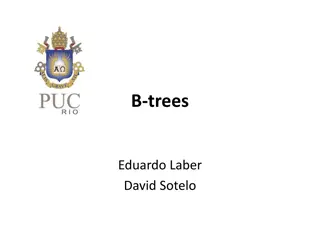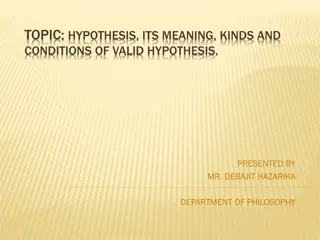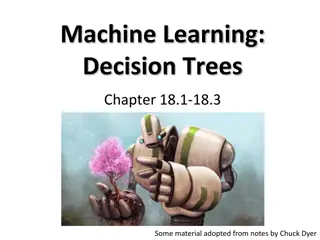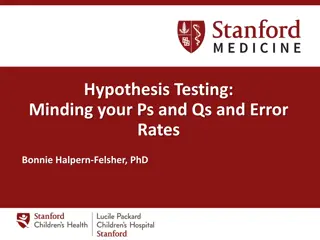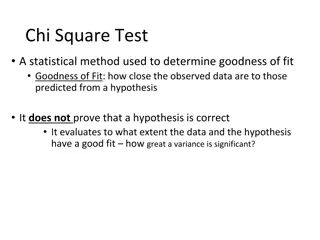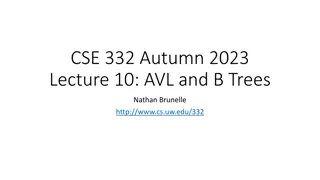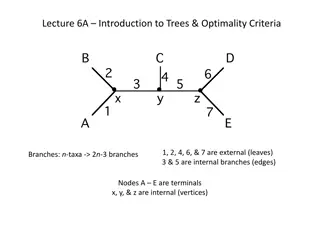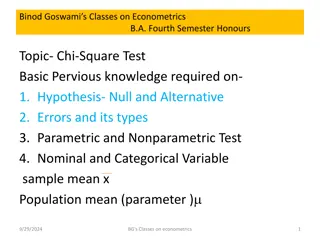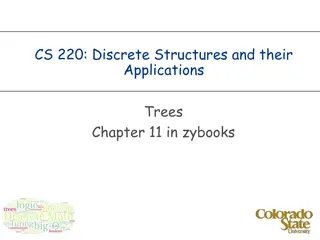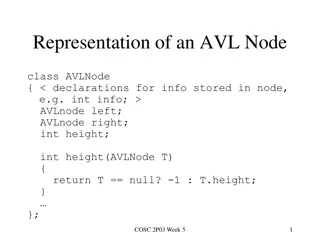Understanding Hypothesis Trees for Effective Assessment and Analysis
Hypothesis trees offer a structured approach to analysis by identifying problems, potential causes, testing hypotheses, and reaching conclusions. They enhance evidence gathering and ensure the child's perspective is central in assessments. Utilizing stages like problem identification, cause analysis, and hypothesis testing, professionals can address issues at their core rather than surface-level concerns.
Download Presentation

Please find below an Image/Link to download the presentation.
The content on the website is provided AS IS for your information and personal use only. It may not be sold, licensed, or shared on other websites without obtaining consent from the author. Download presentation by click this link. If you encounter any issues during the download, it is possible that the publisher has removed the file from their server.
E N D
Presentation Transcript
Hypothesis Trees An aid to good assessment and analysis
What is a Hypothesis Tree? Hypothesis Trees can help us make sense of what is going on within a family and provides us with a more structured approach to our evidence gathering, analysis and completion of assessments. A Hypothesis Tree takes a problem, identifies the possible causes of the problem and helps to work out what action is needed to rule the hypothesis in or out. Hypothesis Trees help to ensure we work from a strong evidential base and that the voice of the child is clear within our assessments and planning. Hypothesis Trees help us take a more systemic approach to working with families and problem solving, helping us to deal with the underlying cause of an issue rather than just the presenting behaviours or concerns. It is easier for others to see our rationale and how we have reached conclusions.
Hypothisis Tree
Stage One What is the problem From the information you have, identify what the problem is and where it fits in the Assessment Framework. There may be more than one problem and they can often be complex which is why it is important to identify where it fits into the Assessment Framework as it will help identify the area you need to focus on in your evidence gathering.
Stage Two What are the possible causes? Identify possible reasons behind the problem or issue. Think about the background information and family history to assist with this. What do we already know about the child and family? Genogram or family tree might help with this. Use research and your own professional experience to help identify possible causes. You can use the DDM Tools to assist with this. This is also a good exercise to complete with a colleague or your team, especially if you know the family well. E.g Group Supervisions
Stage three How are we going to test our hypothesis out? Look at what actions are needed to rule a hypothesis in or out? What evidence do we need? Who do we need to speak to? What agencies can assist? Do we already have the information we need? Do we need a more detailed assessment of a specific issue? Where does the voice of the child fit in? Do we need to undertake some observations?
Analysis and conclusion Once you have identified your hypothesis and worked out a way to gather the evidence you can then evaluate your findings to help rule the hypothesis in or out. This work can be included in the analysis of your assessment. Again the DDM tools are a really good way to assist with this work. It is still ok to not know and to not have all the answers at the end of this process. We are constantly assessing and evaluating. Once we know what the cause of the problem is, this can help with our planning and intervention The Golden Thread . What do we know? What does this mean? What needs to happen?
Example Tommy is 11 years old and he is often out in the community being aggressive, causing damage to property and getting brought home by Police. He doesn t attend school very often and when he does, he will often get excluded for poor behaviour. Tommy will often report to his Mum that he has stomach pains in the mornings.
Concern 1 Issue: Tommy is engaging in antisocial behaviour. (Emotional and behavioural development) Possible reasons: Tommy might not like to be at home because there may be things happening there that he doesn t like. Tommy s adults might not be that bothered about where he is. Tommy may have low self esteem and self worth. Learnt behaviour from others. Tommy might be frustrated or worried about something. Actions: Gather DLE of Tommy. What does his day look like, what are his interests etc? Observe Tommy at home with his family. What do his interactions with his adults look like? Speak to Tommy s adults about the boundaries and structure he has at home. See whether YOS, school or other agencies have completed any direct work with Tommy and what did that say?
Concern 2 Issue: Tommy doesn t attend school very often and he often gets excluded (Education). Possible reasons: Tommy might be scared to leave the house if there is something happening there like domestic abuse. Tommy s adults may not try and get him to attend. Tommy might have an undiagnosed learning need which makes school difficult. Tommy might be getting bullied at school. Tommy might have a medical condition. Actions: Voice of the child. Observations at home including the relationships within the home. Speak to School attendance to see what work they have completed. Speak to Learning Mentor at school to see what support he gets. Liaise with School and School Health to see whether any assessments are needed. Speak to Tommy s adults about his morning routine.
Concern 3 Issue: Tommy will often report to Mum that he has stomach pains (Health) Possible reasons: Tommy might be scared to leave the house in the morning. Tommy might want to get out of attending school. Tommy s might have an underlying health issue. Tommy might be anxious. Tommy might be out late at night and be tired. Tommy might have a poor diet. Actions: Voice of the child. Observations at home of morning routines. Assessment by Nurse or GP. SDQs might be helpful.




